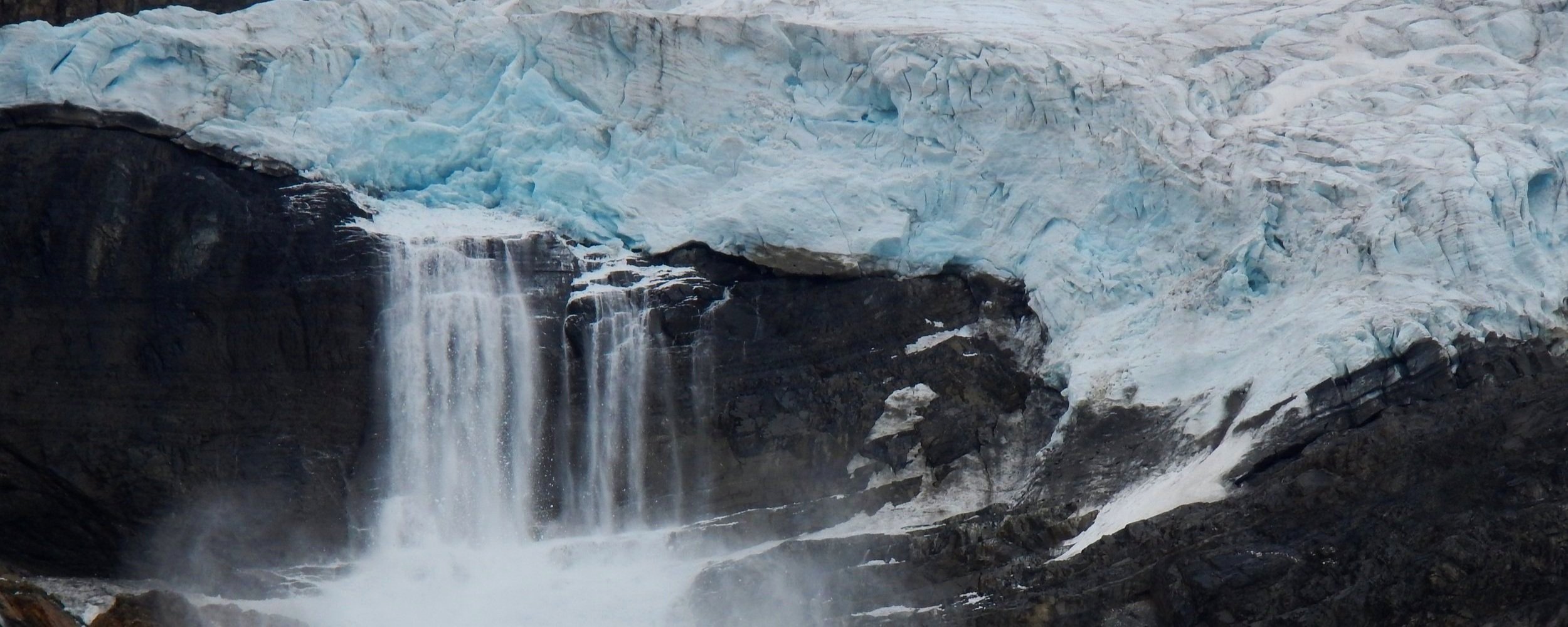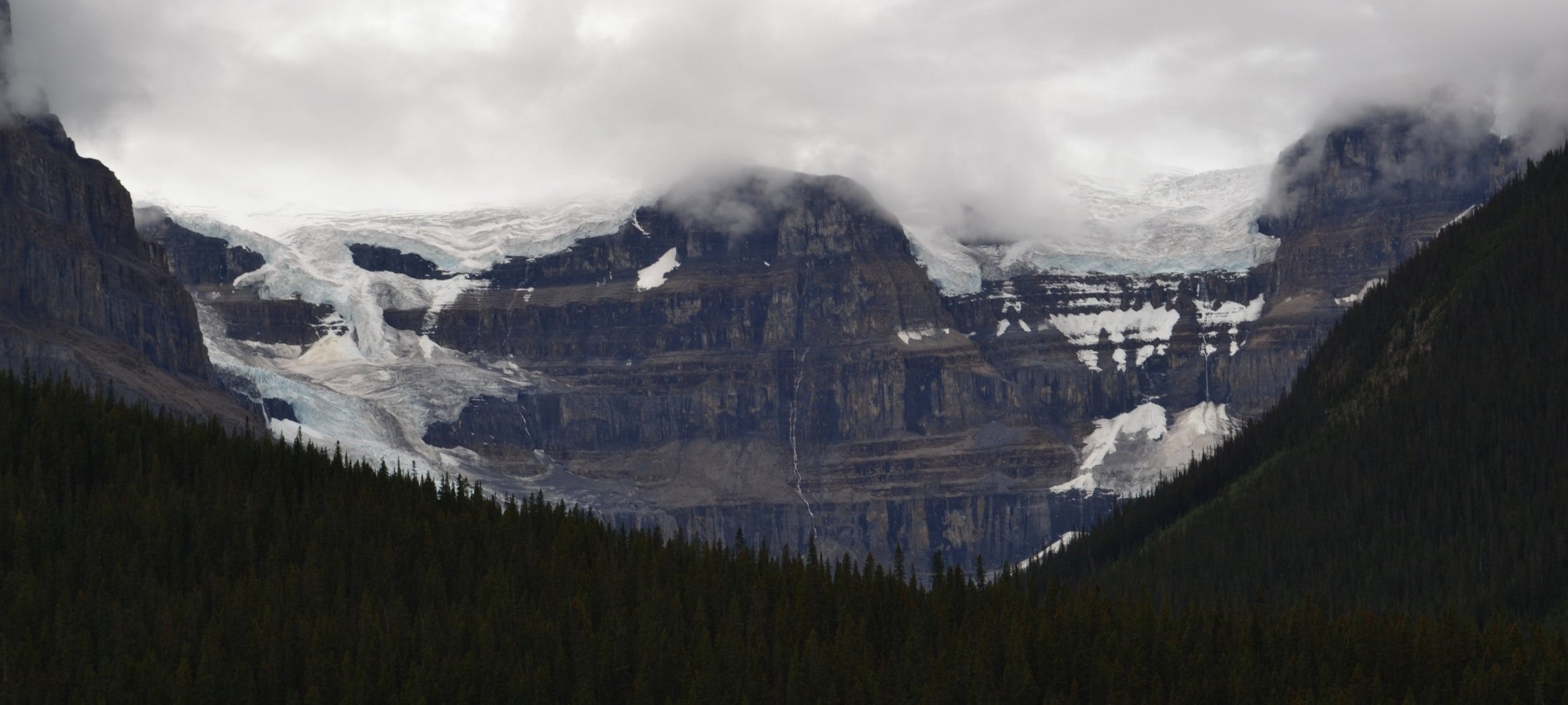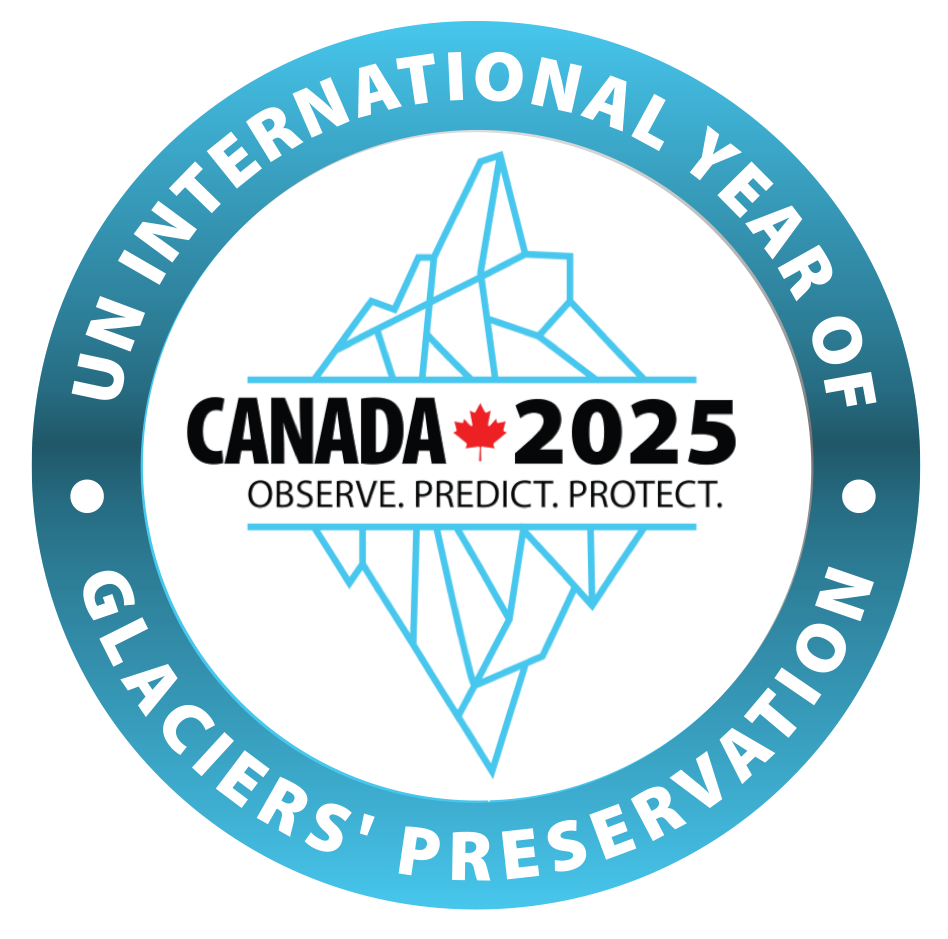
Ice. Snow. Water. Life.
How does climate change affect glaciers?
Glacial mass balances are impacted by a number of factors. In general, a glacier will recede when the factors contributing to its ablation (ice loss) exceed those contributing to its snow (and eventually ice) accumulation. Ablating factors include ice melt, evaporation, wind scouring and calving (ice breaking-off), and if these forces are not offset by equal or great snow accumulation during the winter, the glacier will begin to retreat.
Photo from the Centre for Hydrology, University of Saskatchewan
Climate Change Effects on Canada’s Frozen Land
Climate change is rapidly driving glacial recession. Higher atmospheric temperatures are affecting the volumes of snowfall during the winter and the length of the cold season which are reducing seasonal accumulation, while the reduced snowpacks and summertime heatwaves are resulting in drastic melt rates in the warm season. The rates of recession are also being affected by other indirect climate effects such as soot deposits from wildfires. Soot darkens glacial surfaces, thereby causing the glacier to absorb even greater amounts of sunlight, hastening the melting process.
Glaciers in western Canada have experienced extreme rates of recession in recent years. In fact, for the first time ever recorded in 2023, glacier mass balances decreased during the winter. Summer ablation has also been significant. Peyto Glacier in Banff National Park (pictured above) retreated an astonishing 409m and decreased 29m in height between 2019 and 2023. Other glaciers in the Columbia Icefield and other mountain regions are not faring any better. It is projected that glaciers across western Canada will lose between 74% to 96% of their volume by the end of the century, a fate unlikely to change even if we meet the 1.5˚C limit set by the 2015 Paris Agreement.
The impacts of glacial recession vary. In terms of water resources, the role of glaciers can be understood as being “drought-proofers” for river streamflows. Most of the water filling the rivers that come out of the mountains is from snowmelt, but recently we have been seeing both more rapid rates of snowmelt and earlier melt owing to abnormally high temperatures. When combined with times of low rainfall (as we saw in 2023, for example), this has resulted in extremely low water levels especially towards the end of the summer. Melting glaciers in these circumstances have helped to compensate for these other climate change impacts by helping to keep the rivers flowing. As the glaciers recede, we risk losing this buffer to our water supplies.
Can we really preserve our glaciers?
It depends what we mean by “preserve.” The greatest threat to glaciers is anthropogenic climate change and so glacial action means climate action. That said, glaciers are embedded in complex climate feedback systems already in flux, meaning that even if we stopped all CO2 emissions today, we would still be seeing a dramatic decline in glacial ice volumes in Canada. This means that while climate action is necessary, we also need to prepare for change. The purpose of calling for “glaciers’ preservation” is not really to “save the glaciers.” The purpose is to recognize the significance of water in its all of its frozen forms using glaciers as a symbol of the change to come.
How does climate change affect mountain snowpack?
Unlike glaciers, the relationship between snowpack and climate change is less certain. Across the global Northern Hemisphere, winter snowpacks have been showing non-linear responses to atmospheric warming, meaning that some areas have been affected much more than others despite only small differences in regional seasonal temperatures. There is strong variability in Canada: in general, snowpacks are declining at the lowest elevations in the Canadian Rockies but are not at the highest elevations, while many locations in northern Canada are seeing their snowpacks increase. That said, in some western Canadian mountain ranges the snow-covered period of the year has decreased by up to the six weeks – a major change.
Bow River in Canmore, Alberta taken on January 7 2024. Low snowpack is causing concern over summer drought and wildfire conditions. Photo by Zoë Johnson.
There is a dire need for more snow and ice research in Canada’s west so that water managers, municipalities, irrigators, skiers and everyone in between can understand what change is to come. Uncertainty should not be regarded as grounds for dismissal. If anything, it should be understood as the reason to take more action. We may be closer to tipping points than we think, and if we cross them, our country’s very capacity to function will be affected.
The seasonal snowpack is incredibly important for Canadian water resources forming about ¾ of streamflow in much of the country. It is typically measured in terms of snow-water equivalent (SWE), which is the amount of water that, if melted, a given volume of snow will produce. Snow itself is vital to local economies and communities built around the ski industry and other winter activities, but it is this volume of water, the SWE, that makes snow so imperative to Canada’s water security and by extension, our economic, food and energy security as well. Melting snow from the mountains is responsible for the majority of springtime streamflow and as it descends from the peaks, it replenishes lakes and rivers, feeds drinking water supplies, provides water for irrigation, agriculture and hydroelectric power and reduces the risk of wildfires, among other crucial roles. Snowmelt from the Rocky Mountains feeds rivers that reach the Hudson’s Bay, Arctic Ocean and Pacific Ocean; it is the lifeblood of half the country.
Climate change in Canada’s Arctic
With rates of warming more than three times greater than global average, Arctic regions are facing many profound changes in their landscape and ecosystems. Glacier retreat, sea-ice and lake-ice thinning, permafrost thawing, coastal erosion from wave action and shifting ranges of plant and animal species, among others, are all affecting Canada’s North. These processes are dynamic in time and space, however, meaning the nature and severity of impacts on Arctic communities are hard to predict and will vary from place to place.
Throughout the Arctic, significant changes in ice conditions are being observed. The number of ice-free days on lakes, rivers and the ocean is rising as higher seasonal temperatures cause ice cover develop later and melt earlier than it has in the past. Arctic glaciers are also being impacted, with observed increasing trends of ice-calving and melt. As with mountain regions, this can result in changes in run-off, affecting ecosystems that rely on glacier-fed rivers and streams through fluctuations in water levels, salinity (both in salt and freshwater) and water quality. How the landscape responds to snow and ice change will also affect the habitats of native Arctic species . Plant cover, snow and precipitation patterns and landform change can all affect the distribution of species as well as their population sizes, and not only will this alter ecosystem dynamics, but the changes in wildlife patterns will have profound implications on the traditions, culture and diets of indigenous Arctic communities.
Hazard risk is changing in permafrost environments well. As water in permafrost regions shifts between its frozen and liquid states, the structural integrity of the ground changes as well. For example, in frozen soils, water can collect in cracks in the ground when temperatures are high, and then freeze again when temperatures drop. When water freezes it expands, and the gradual, repeating cycle of water collection can create large ice-wedges in the ground. Some of these ice-wedging processes in the Canadian arctic have been going on for many decades, resulting in ice-wedges from ranging from 2 to 50 meters in diameter. Now with increasingly warmer temperatures, these wedges are melting, causing the terrain to shift and slump.
A video explaining the processes involved in tidewater glacier calving. There are nearly 300 tidewater glaciers in the Canadian Arctic. (Source: NASA).
How ice change can lead to surface deformations in permafrost environments. (Source: the US National Park Service)
Feedback Loops
A climate feedback loop is something that either speeds up (a positive loop) or slows down (a negative loop) a warming trend. Often when we talk about feedback loops, we are referring to situations where one thing is helping to exacerbate another. For example high temperatures are leading to increased glacial melt, and increased the glacial melt is reducing the amount of solar radiation that gets reflected back into space - increasing temperatures even more. There are many positive climate feedback loops being observed throughout the cryosphere. Two prominent ones in Canada pertain to wildfires and permafrost degradation.
Glacier covered in soot. Photo from the Centre for Hydrology, University of Saskatchewan
Wildfires
In addition to glacial recession, climate change is also related to the increasing size, intensity and frequency of forest fires. As glacial surfaces turn black from wildfire soot and debris carried through the air, their reflective capacity, or ‘albedo,’ decreases. White snow and ice cover are capable of reflecting back large amounts of solar radiation, while darkened surfaces absorb radiation. This means wildfires both can impair the atmospheric cooling effect of glaciers and can directly accelerate their rates of melt as well.
Snow hydrology is also linked to wildfire risk. We observed in 2023 the most destructive wildfire season ever recorded in Canada, owing in part to lean snowpacks and early snowmelt contributing to dry summer conditions. Not only then can wildfires can contribute to the degradation of the cryosphere, changing cryospheric conditions can also contribute to wildfire hazard. It is a vicious cycle that requires more research and resources to address.
Methane release from permafrost thaw
Image source: World Wildlife Fund.
Image source: IPCC Sixth Assessment Report FAQ 5.2.
Permafrost in Canada’s arctic can be several thousands of years old. During its formation, as the ground froze it trapped in it a mix of plants, bacteria and other organic matter. This freezing originally prevented decomposition from occurring but now as permafrost soils thaw, the ancient organic matter is able to decay and degrade. This is problematic from a climate perspective because the decomposition process emits carbon dioxide and methane (both greenhouse gases) into the atmosphere. Frozen ground also contains carbon in the soil, which when exposed to the air, can transform into carbon dioxide. The loss of permafrost carbon stores into the atmosphere will exacerbate the greenhouse gas effect causing climate warming. The IPCC Sixth Assessment Report estimates that greenhouse gas emissions from permafrost thaw could amount to the equivalent of 14–175 billion tonnes of carbon dioxide per 1 °C of warming.
Check this out - ClimateData.ca
ClimateData.ca is a climate data portal produced collaboratively by the country’s leading climate organizations and supported, in part, by the Government of Canada. The goal of this portal is to support decision makers across a broad spectrum of sectors and locations by providing the most up to date climate data in easy to use formats and visualizations.
ClimateData.ca is supported by the Canadian Centre for Climate Services (CCCS) of Environment and Climate Change Canada. Click Here to learn more.
Interested in the science? Read the latest research.

Stutfield Glacier, Jasper National Park, Photo by Zoë Johnson.








